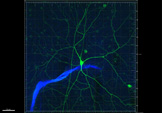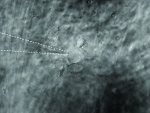Neural interfaces
We develop better tools for scientists and clinicians to interact with the
brain at-scale and with reduced invasiveness. Towards this goal, we pursue two
research directions:
The research is multi-disciplinary, involving: CMOS microelectronics circuits, cleanroom micro/nano-fabrication, embedded FPGA systems, software and algorithm development (including CUDA GPUs) and in vivo / in vivo biological experiments. I am also interested in understanding how visual processing is carried out by the retina - a topic intimately related to my other major research area (see below). The above tools are unique, enabling technologies for exploring systems-level neural computational principles in the retina, at the resolution of individual neurons.
|

|

